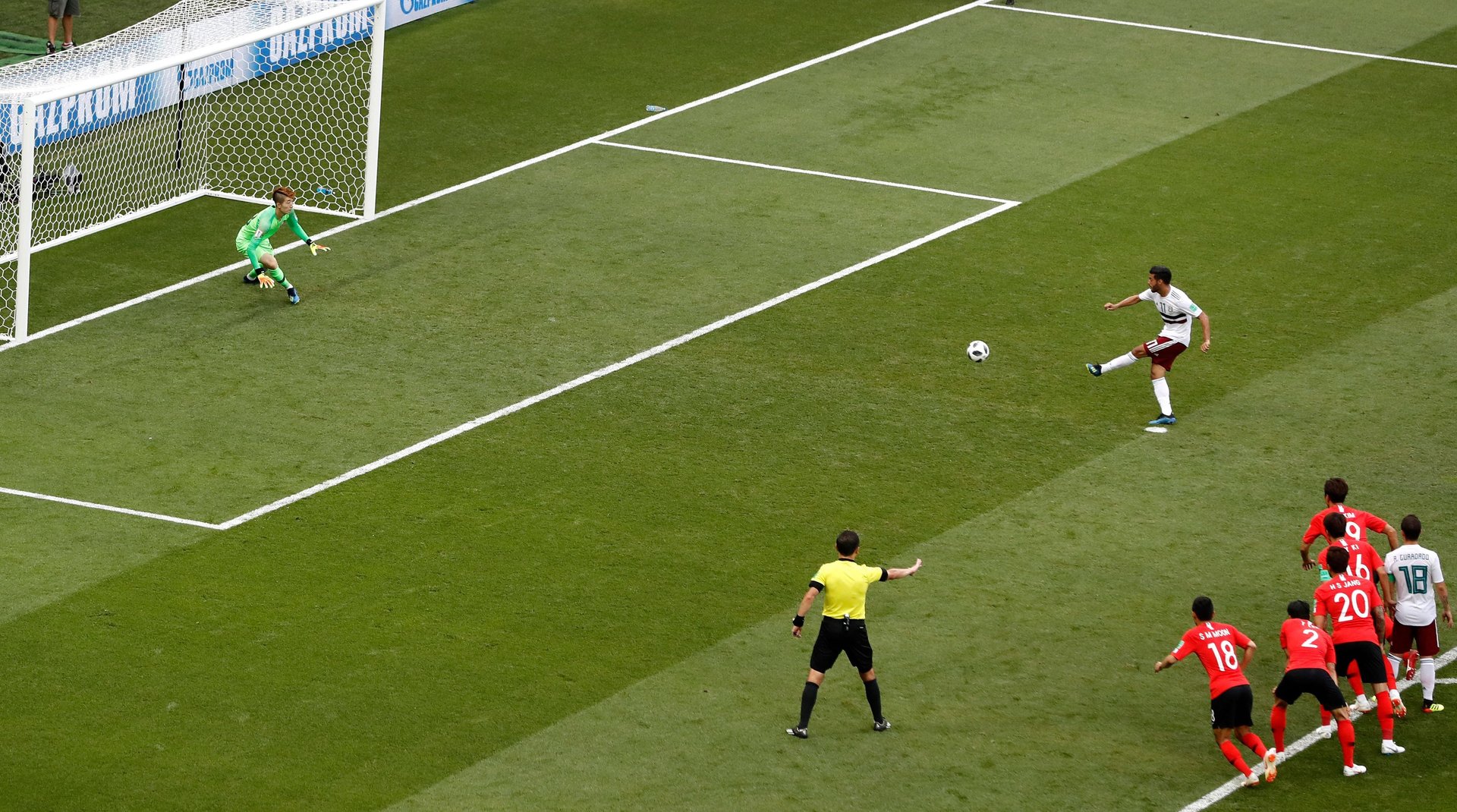The problem with penalty kicks in soccer
Like many Americans, I’m a relatively late convert to soccer fandom. In the last six or so years that I’ve applied myself to following the sport, I’ve become fascinated with the elegant flow of the game, with the individual artistry of its players, and by the global sweep of world football.


Like many Americans, I’m a relatively late convert to soccer fandom. In the last six or so years that I’ve applied myself to following the sport, I’ve become fascinated with the elegant flow of the game, with the individual artistry of its players, and by the global sweep of world football.
But I remain annoyed and frustrated with the illogic of penalty kicks, the one-size-fits-all sledgehammer used to solve problems as varied as savage tackles, stray handballs, and tied games.
There’s no questioning the drama of the penalty kick: shooter and goal keeper, squaring off, face-to-face. The tension within that confrontation, and the mind games of the stand-off, has even spun out its own game theory.
In that drama, however, is the inherent flaw: In a game where low scores are the rule, penalty kicks are entirely too consequential to the final result.
Take, for example, the Russia-Spain World Cup match July 1, which was eventually settled by a penalty shootout, after 30 minutes of extra time. Whether or not the penalty shootout is the best way to pick a winner is a separate debate—prior to their introduction, teams would draw lots or replay the entire game. This game was tied after 120 minutes only because Russia was awarded a penalty kick after a Spanish handball in the penalty area. That one penalty shaped the outcome of the match, and by knocking out Spain, one of the tournament’s favorites, the entire World Cup.
The punishment rarely fits the crime
A penalty kick awards an opportunity to score that was prevented by a foul. They’re only called on fouls in the penalty area—the box that extends 18 yards from the goal line into the field. Fouls elsewhere are rewarded with a free kick. But by giving penalty-kick shooters an unimpeded shot just 12 yards from the net, referees dramatically increase the odds of scoring. Penalty kicks have been converted about 75% of the time, depending on the league and year, compared to just 11% of regular shots in the English Premier League last year, the highest rate in more than a decade. Certainly, some players have a clear, unimpeded shot on goal and are sure to score before they’re fouled. Many more situations are more ambiguous. Take the attempted header of Russia’s Artem Dzyuba that was blocked by the upraised arm of Spain’s Gerard Pique: Absent the foul, it’s impossible to know whether the ball sails wide, hits the goal posts or is saved by the keeper. Even if the point of calling the foul is to deter future bad behavior, a penalty kick is a huge upgrade in the odds of scoring over the opportunity lost.
The wrong shooter
Logic would hold that the player who is fouled would take the penalty kick. After all, it was their chance that was lost. But the convention is the best shooter on the team takes the penalty kick, further tilting the odds toward the attacking team. And since the designated penalty takers get more practice, they become comfortable with the pressure, and become more effective. And because penalty kicks aren’t distinguished in individual statistics, they help pad the goal scoring totals of the top players. Jamie Vardy of Leicester City, for example, had 20 goals in the EPL last season, good for fourth. Five came from penalty kicks.
Unintended consequences
There were fewer than three goals scored per match in the EPL last season, and in that context, any penalty kick could easily decide the game. Because a penalty kick is such a rich reward, players have a huge incentive to earn them, leading to the diving and flopping that is the bane of modern soccer. And because referees know the stakes are so high, they’re naturally less willing to call them, leading to rougher play in the penalty area. There is so much shoving and tugging during corner kicks that when the referee finally does calls a foul, it can be for a penalty that could be called a dozen times in any game.
The solution
Fouls whistled in the penalty area should be both more common and less consequential. More frequent penalties would help clean up rough play, and less would ride on any individual foul. And penalties with lower stakes would mean games wouldn’t tip on their outcome. One simple fix is to make them harder to make, by moving the penalty spot back, to 15 or even 20 yards from the goal. A smarter solution may be to create two classes of fouls committed in the penalty area. Egregious acts of violence or the impeding of an obvious goal would result in penalty kicks from 12 yards, as they are today. Fouls committed without obvious malice, or when their impact isn’t as clear, could receive an indirect free kick—where a second player after the shooter must touch the ball— in the penalty area, from the point of the foul. The fouled team would still be rewarded, so justice would be served. The chance of scoring would be appropriately lowered, and the effect on the outcome on the game wouldn’t be as dramatic.